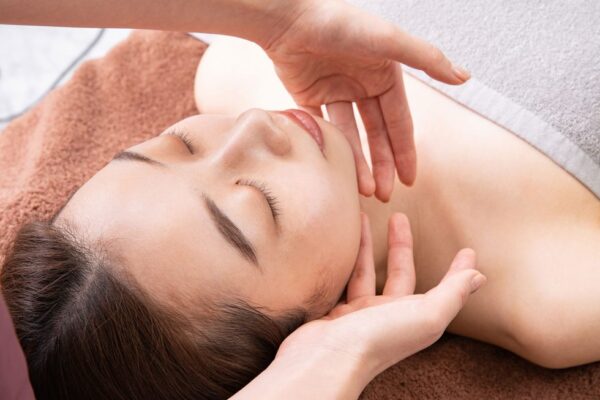If you’ve thought about getting a facelift, you might have questioned if the operation could alter how your earlobes look. Yes, a facelift can change your earlobes, to put it briefly.
The surgeon then tightens the skin and underlying tissues of the face and neck during a facelift. During the treatment, the skin around the ears is also elevated, which may alter the earlobes’ size and placement. After a facelift, the earlobes could occasionally look stretched out or deformed. Please continue reading to learn all about facelift ear problems, how to avoid them, and their possible solutions.
Earlobe distortion
Unfortunately, ear deformation is one of the most frequent side effects of a shoddy facelift. Because facelift incisions are done in and around the ear, caution must be used to prevent distorting any part of the ear, the sideburn, or the hairline surrounding the ear.
When ear distortion following a facelift occurs, the situation can frequently be fixed. The cheek can often be pulled up under the lobe to rectify the appearance if the earlobe is pulled down, with a visible scar surrounding it (a condition known as “pixie ear”).
Pixie Ear

The phrase “pixie ear” describes a potential issue that could arise after a facelift. The earlobe essentially seems stretched when it happens. Additionally, it might make separated earlobes appear attached. It can be an obvious sign of a facelift to those who know what to look for. The malformation may not always be severe. Others might need additional surgical treatment to rectify it.
Cause for Pixie Ear
When the skin and tissues around the jaw and lower face are constricted, pixie ears develop. Typically, facelift incisions are made behind or close to the ear. Therefore, when the surgeon adjusts and tightens the surrounding skin, it could result in a pixie ear deformity.
Ideal candidates for pixie ear correction
Pixie ear correction is a good technique for those born with flat earlobes that integrate with their skin or who already had a look due to a facelift.
To have surgery, candidates must be at least 18 years old.
During your initial appointment, a surgeon will be available to you, who can decide whether you are a candidate for a pixie ear correction.
Preventing ear lobe distortion after facelift
Proper post-operative care is also essential to avoid earlobe alterations following a facelift. Following the treatment, your surgeon will provide you with a detailed guide on how to care for your incisions and earlobes, which may include:
- Avoid wearing heavy earrings or sleeping on your side, as these activities might strain your earlobes.
- Avoiding vigorous exercise or activity for a few weeks following the operation
- Maintaining regular follow-up appointments with your surgeon to track the status of your recovery and discuss any worries you may have
Earlobes Swelling Following Facelift

Any facial features close to the raised area may be impacted. Patients with disconnected earlobes (which hang freely and are not attached adjacent to the jawline before surgery) are more likely to experience earlobe edema following a facelift. As ear lymphatic drainage runs downhill, it will collect in the detached earlobe, causing it to swell. The unattached earlobe is a piece of tissue at the bottom of the ear.
Avoid wearing heavy earrings after a facelift, give yourself a light massage to reduce the swelling, and be patient.
Treating swollen earlobes after facelift
Earlobe reduction surgery is an option if you are worried about the size of your earlobes following surgery. Still, holding off on additional procedures is preferable until all post-facelift edema has gone down.
Consult your surgeon to review specific procedures to lessen swelling, ear discomfort, infection, and other adverse effects after a facelift.
Burning Ears After Facelift
Following a facelift, some individuals may suffer tingling, stinging, burning, or lightning/electricity sensations in their ears. Small sensory nerves are severed when skin is removed from supporting tissues during a facelift. There may be variable degrees of numbness while these nerves reattach to the skin. Nerve endings occasionally become irritable when they regenerate and awaken, which is uncomfortable for the patient.

Although the nerve reconnection procedure might take two to six months, the unpleasant sensations should disappear within a month of surgery. Ice, anti-inflammatories, and mild massage are all effective ways to ease pain during this stage of the healing process.
No matter where you are in the surgical process, talk to your surgeon if you have any concerns regarding the facelift operation or the healing process.
The best recovery advice after a facelift
- Watch your activity level and take it easy.
- Start walking as soon as possible since it helps reduce edema and reduces the risk of blood clots.
- You may become tired quickly. For the first week, be sure to rest easily.
- For two weeks after surgery, refrain from driving.
- No vigorous activity for at least six weeks, including heavy chores and sex. (Walking and light stretches are OK.)
- In four weeks, go back to work.
- Rest and watch bruising and swelling.
- Maintain a cold compress on your face and neck. Wrap the cold pack in a thin cloth and lay it over the surgery areas. Practice this as much as possible for the first three days following surgery. Either ice or heat are acceptable after 72 hours.
- For a week, refrain from bending over or lifting heavy objects. This may increase blood pressure in addition to exacerbating edema and triggering hemorrhage.
- Try not to hit or bump your head, neck, or face. It is prudent to avoid picking up young children or animals, and you should sleep alone for one week following surgery.
- For one to two weeks following your procedure, sleep with the head of the bed elevated. Put one or two pillows on top of the mattress and two or three beneath the head to achieve this.
Avoid rolling onto your face; this might cause the supporting sutures under your skin to rip out, necessitating two weeks of sleeping on your back. A recliner positioned at a 45-degree tilt may be more comfortable for certain people.
- Applying an elastic bandage following the instructions we will provide will help support the swollen tissues.
- For one month, avoid excessive sun exposure on your face; average exposure is OK.
- Manage discomfort and pain.
- One or two paracetamol pills can be used for minor discomfort every three to four hours.
- Ibuprofen is often not advised during the first few days following surgery. This is because ibuprofen may lead to more bleeding and bruises.
When do I need to contact my face surgeon?
Immediately contact your surgeon if:
- You have further bruising or swelling.
- Even after a few days, the swelling and the redness are present.
- The area around the incision has become redder.
- Your pain is severe or worsening, and medicine is not helping.
- You have any pharmaceutical adverse effects, such as rash, nausea, headache, or vomiting.
- Your oral temperature is greater than 100.4 degrees.
- You experience any greenish or yellowish leakage from the wounds or detect an unpleasant odor.
- You have difficult-to-control bleeding from the wounds.
- Your ability to move or feel is impaired.
Conclusion
Any adjacent portions of the face or head may experience side effects following a facelift. Possible complications after a facelift include swelling under the chin, ridges in cheeks, or facelift ear problems. However, every patient is unique; while some people won’t have severe symptoms, others can have them at various times throughout the healing process. Remember that you can discuss any worries or discomfort you may be experiencing after a facelift with your physician.









